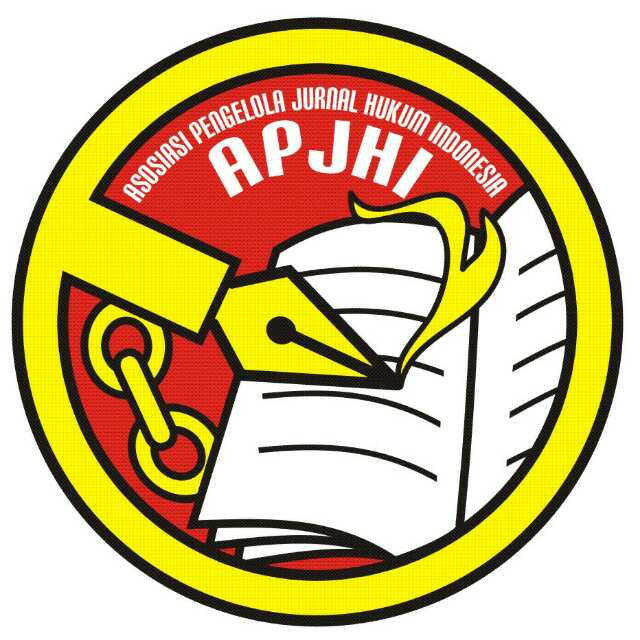THE CONCEPT OF MASLAHAH IN ISLAMIC FINANCIAL LITERACY AMONG YOUTH IN BANK NEGARA MALAYSIA MUSEUM ART AND GALLERY
Abstract
The effort to enhance financial literacy has become extremely important and is complementary to the initiative by Consumer Credit Act in order to strengthen the credit consumer protection framework in Malaysia. Therefore, Bank Negara Malaysia Museum Art and Gallery (BNM MAG) educates the public through exhibits that foster visitors’ understanding of financial knowledge especially the Sharia compliant matters at their Islamic Finance Gallery. This study examined the relationships between satisfying experiences and generic learning outcomes of youth visitors at BNM MAG. The study examined three key satisfying experiences that had significant and positive effects on the generic learning outcomes of youth visitors including affective, cognitive and sensory experiences. However, social experiences were not significant towards generic learning outcomes on youth visitors. This study provides insights and drive efforts to promote effective delivery of financial education initiatives to Malaysians in a sustainable manner. The authors expect that policymakers or museum managers could make use of the findings to improve Malaysians’ financial literacy in general, thus helping Malaysians making informed financial decisions. The study contributes to the advancement of Islamic financial education for the youth with the purpose of improving creative and productive attitudes.
Upaya meningkatkan literasi keuangan menjadi sangat krusial dan mendukung inisiasi Undang-Undang Kredit Konsumen untuk memperkuat kerangka perlindungan kredit konsumen di Malaysia. Maka, Bank Negara Malaysia Museum Art and Gallery (BNM MAG) mengedukasi masyarakat melalui pameran yang memberikan pemahaman kepada pengunjung tentang keuangan khususnya yang berhubungan dengan syariah di Islamic Finance Gallery (Galeri Keuangan Syariah). Studi ini mengkaji hubungan antara kepuasan pengalaman dan hasil pembelajaran umum (generic learning outcomes/GLO) yang dialami pengunjung muda di BNM-MAG. Ada acuan kepuasan pengalaman yang dijadikan objek studi yang memiliki efek signifikan dan positif terhadap GLO di kalangan pengunjung muda termasuk pengalaman afektif, kognitif, dan sensori. Meskipun begitu, pengalaman sosial para pengunjung tidak signifikan terhadap GLO. Studi ini memberi wawasan dan mengenalkan usaha untuk mengenalkan penyampaian yang efektif tentang inisiasi pendidikan keuangan pada warga Malaysia dengan cara yang berkelanjutan. Penulis berharap agar pembuat kebijakan atau pengolah museum dapat memanfaatkan temuan ini untuk meningkatkan literasi keuangan warga Malaysia secara umum, dengan demikian membantu mereka untuk membuat keputusan keuangan yang tepat. Penelitian ini memiliki kontribusi meningkatkan pendidikan keuangan Islam bagi para pemuda dengan tujuan menumbuhkan sikap kreatif dan produktif.
Keywords
Full Text:
PDFReferences
Afonso, A. S., & Gilbert, J. K. (2008). The nature of exhibits about acoustics in science and technology centres. Research in Science Education, 38(5), 633–651.
Asquith, R. A. (2012). Elements of visitor experience that affect visitor satisfaction in US museums.
Dilenschneider, C. (2020, July 15) The three most important reasons to prioritize visitor satisfaction (DATA). Retrieved from https://www.colleendilen.com/2018/04/25/threeimportant-reasons-prioritize-visitor-satisfaction-data/
Dirsehan, T., & Yalçin, A. M. (2011). Comparison between holistic museum visitors and utilitarian museum visitors. International Journal of Marketing Studies, 3(4), 78.
Doering, Z. D. (1999). Strangers, guests, or clients? Visitor experiences in museums. Curator: The Museum Journal, 42(2), 74-87.
ElDamshiry, K. K. H., & Khalil, M. H. M. (2018). Museum visitors learning identities interrelationships with their experiences. In Green Heritage Conference: Chance–Change–Challenge (pp. 277-314). Cairo: The British University in Egypt.
Falk, J. H., & Dierking, L. D. (2000). Learning from museums. Walnut Creek.
Gammon, B. (2003). Assessing learning in museum environment. A practical guide for museum evaluators.
Graham, H., Mason, R., & Nayling, N. (2013). The personal is still political: Museums, participation and copyright. museum and society, 11(2), 105-121.
Hooper‐Greenhill, E. (2004). Measuring learning outcomes in museums, archives and libraries: The Learning Impact Research Project (LIRP). International Journal of Heritage Studies, 10(2), 151-174.
Lim, J.-L. (2019, July 23). Malaysia Launches The National Strategy For Financial Literacy. I-Money. https://www.imoney.my/articles/national-strategy-financial-literacy
Lusardi, A. (2019). Financial literacy and the need for financial education: evidence and implications. Swiss Journal of Economics and Statistics, 155(1), 1.
Kotler, N. (1999). Delivering experience; Marketing the museum's full range of assets. Museum News, 78(3), 30-+.
McGonigal, J. (2009) Fiero! Museums as Happiness Pioneers. Museum, 88(2), 48-53.
Mohamad, A. (2020, October 13). Financial literacy among youth alarmingly low. New Straits Times. https://www.nst.com.my/opinion/letters/2020/10/631937/financial-literacy-among-youth-alarmingly-low
Packer, J., & Ballantyne, R. (2002). al factors and the visitor experience: A comparison of three sites. Curator: The Museum Journal, 45(3), 183-198.
Packer, J. (2008). Beyond learning: Exploring visitors' perceptions of the value and benefits of museum experiences. Curator: The Museum Journal, 51(1), 33-54.
Pereira, M. C., & Coelho, F. (2020). Regulatory focus, money attitudes and financial literacy: Evidence from Portuguese young adults. Journal of Family and Economic Issues, 1-11.
Pekarik, A. J., Doering, Z. D., & Karns, D. A. (1999). Exploring satisfying experiences in museums. Curator: The Museum Journal, 42(2), 152-173.
Setiawati, R., Nidar, S. R., Anwar, M., & Masyita, D. (2018). Islamic Financial Literacy: Construct Process and Validity. Academy of Strategic Management Journal, 17(4), 1-12.
Tillon, A. B., Marchal, I., & Houlier, P. (2011, October). Mobile augmented reality in the museum: Can a lace-like technology take you closer to works of art?. In 2011 IEEE International Symposium on Mixed and Augmented Reality-Arts, Media, and Humanities (pp. 41-47). IEEE.
Veverka, J.A. (2012). Tips and concepts for planning truly “interpretive” exhibits. Retrieved from https://portal.uni- freiburg.de/interpreteurope/service/publications/recommendedpublications/veverka_truly_interpretive_exhibits.pdf
DOI: https://doi.org/10.18860/j.v11i2.10864
Refbacks
- There are currently no refbacks.

This work is licensed under a Creative Commons Attribution-ShareAlike 4.0 International License.
Published By:
Jurusan Hukum Ekonomi Syariah
Fakultas Syariah
Universitas Islam Negeri Maulana Malik Ibrahim Malang
Jl. Gajayana No. 50, 65144 Malang, East Java, Indonesia
Telp./Fax.: (0341) 559399
Email: jurisdictie@uin-malang.ac.id
Abstacting & Indexing :

Jurisdictie: Jurnal Hukum dan Syariah is licensed under a Creative Commons Attribution-ShareAlike 4.0 International License.








